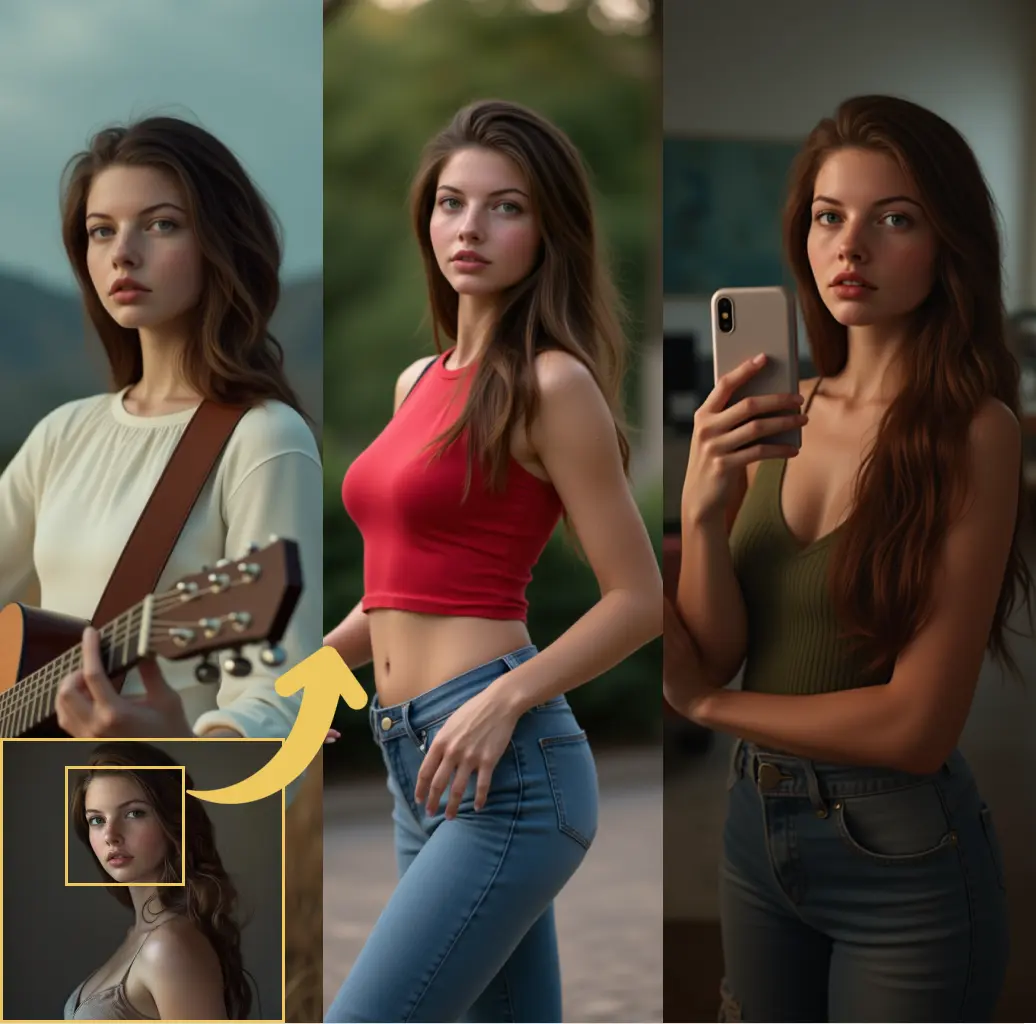ComfyUI Node: LCM img2img Sampler
LCM_img2img_Sampler
Categorysampling
0xbitches (Account age: 816days) Extension
Latent Consistency Model for ComfyUI Latest Updated
2023-11-11 Github Stars
0.26K
How to Install Latent Consistency Model for ComfyUI
Install this extension via the ComfyUI Manager by searching for Latent Consistency Model for ComfyUI- 1. Click the Manager button in the main menu
- 2. Select Custom Nodes Manager button
- 3. Enter Latent Consistency Model for ComfyUI in the search bar
Visit ComfyUI Online for ready-to-use ComfyUI environment
- Free trial available
- 16GB VRAM to 80GB VRAM GPU machines
- 400+ preloaded models/nodes
- Freedom to upload custom models/nodes
- 200+ ready-to-run workflows
- 100% private workspace with up to 200GB storage
- Dedicated Support
LCM img2img Sampler Description
AI image transformation node using latent consistency models for style transfer and image enhancement.
LCM img2img Sampler:
The LCM_img2img_Sampler node is designed to facilitate the transformation of images using latent consistency models (LCM). This node leverages advanced AI techniques to modify and enhance images based on provided prompts and configurations. It is particularly useful for AI artists looking to apply specific styles or effects to their images, offering a seamless way to generate high-quality, consistent results. By utilizing a pre-trained model, this node ensures that the generated images maintain a high level of detail and coherence, making it an essential tool for creative projects that require image-to-image transformations.
LCM img2img Sampler Input Parameters:
image
This parameter represents the input image that you want to transform. The image should be provided in a format that the model can process, typically as a tensor or a numpy array. The quality and resolution of the input image can significantly impact the final output, so it is recommended to use high-quality images for the best results.
positive_prompt
The positive_prompt parameter is a textual description that guides the transformation process. This prompt should describe the desired characteristics or style you want to apply to the input image. The more detailed and specific the prompt, the better the model can tailor the output to match your vision. There is no strict limit on the length of the prompt, but concise and clear descriptions tend to work best.
prompt_strength
This parameter controls the influence of the positive_prompt on the final image. It typically ranges from 0 to 1, where 0 means no influence and 1 means full influence. Adjusting this parameter allows you to fine-tune the balance between the original image and the modifications suggested by the prompt. The default value is usually set to 0.8, providing a good starting point for most transformations.
width
The width parameter specifies the width of the output image. It is important to set this value according to the desired resolution of the final image. The width should be a positive integer, and it is recommended to match it with the height to maintain the aspect ratio of the original image.
height
Similar to the width parameter, the height parameter defines the height of the output image. Ensuring that the height and width are proportionate helps in maintaining the visual integrity of the transformed image. This parameter should also be a positive integer.
cfg
The cfg (Classifier-Free Guidance) parameter adjusts the guidance scale used during the image generation process. Higher values typically result in images that more closely follow the prompt, while lower values allow for more creative freedom. The default value is often set around 7.5, but this can be adjusted based on the desired level of adherence to the prompt.
steps
This parameter determines the number of inference steps the model will take to generate the final image. More steps generally lead to higher quality and more detailed images, but they also increase the computation time. A typical range for this parameter is between 50 and 100 steps, with 50 being a common default.
num_images
The num_images parameter specifies the number of images to generate per prompt. This allows you to create multiple variations of the transformed image in a single run. The default value is usually set to 1, but you can increase it to explore different interpretations of the prompt.
seed
The seed parameter is used to initialize the random number generator, ensuring reproducibility of the results. By setting a specific seed value, you can generate the same output for the same input parameters across different runs. This is particularly useful for experiments and comparisons.
LCM img2img Sampler Output Parameters:
samples
The samples parameter contains the transformed images generated by the node. These images are typically returned as a tensor, with each image maintaining the specified width and height. The output images reflect the modifications guided by the prompt and other input parameters, providing high-quality, consistent results suitable for various creative applications.
LCM img2img Sampler Usage Tips:
- Experiment with different
positive_promptdescriptions to see how the model interprets various styles and effects. - Adjust the
prompt_strengthparameter to find the right balance between the original image and the desired transformation. - Use high-resolution input images to ensure the best quality output.
- Set the
seedparameter to a fixed value if you need to reproduce the same results across multiple runs.
LCM img2img Sampler Common Errors and Solutions:
"Invalid image format"
- Explanation: The input image is not in a format that the model can process.
- Solution: Ensure that the image is provided as a tensor or a numpy array with the correct dimensions.
"Prompt too vague"
- Explanation: The
positive_promptis not specific enough to guide the transformation effectively. - Solution: Provide a more detailed and specific prompt to achieve the desired results.
"Out of memory"
- Explanation: The model ran out of memory during the transformation process.
- Solution: Reduce the image resolution, decrease the number of inference steps, or use a machine with more memory.
"Invalid parameter value"
- Explanation: One or more input parameters have values outside the acceptable range.
- Solution: Check the parameter values and ensure they are within the specified limits.
LCM img2img Sampler Related Nodes
RunComfy is the premier ComfyUI platform, offering ComfyUI online environment and services, along with ComfyUI workflows featuring stunning visuals. RunComfy also provides AI Playground, enabling artists to harness the latest AI tools to create incredible art.


